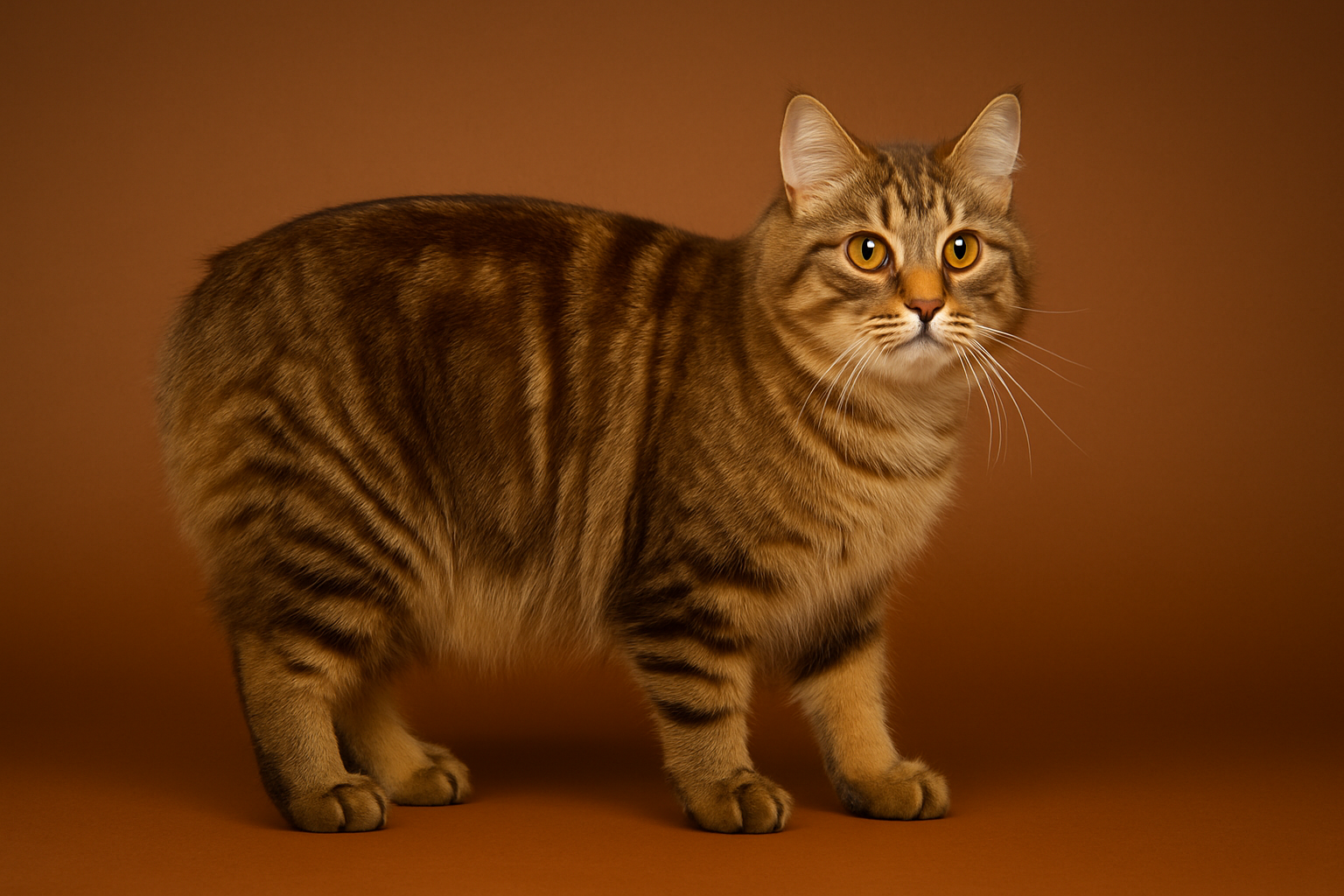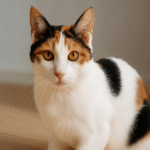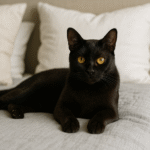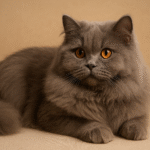The Cymric Cat is a plush, tailless sweetheart with a round face, soft coat, and a gentle, bunny-like stride. You could say they’re the long-haired cousin of the Manx—stocky, solid, and oh-so-snuggly. With their calm energy and quiet loyalty, Cymrics are the kind of cats who curl up beside you and make the house feel warmer just by being there.
They’re not just about looks, though. Cymrics are affectionate, playful, and surprisingly people-focused—often trotting after you from room to room like a little shadow. If you’re hoping for a mellow companion who still enjoys a good chase or game of fetch, this floofy feline might be exactly what you’ve been looking for.
Quick Breed Facts
- Origin: Isle of Man (developed further in Canada)
- Breed registries: CFA, TICA, ACFA
- Weight range: 8–12 pounds
- Lifespan: 12–16 years
- Coat: Medium to long, dense double coat
- Colors and patterns: All colors and patterns accepted
- Eye color: Varies (often large and expressive)
- Grooming: Moderate to high
- Activity level: Moderate
- Affection level: Very affectionate
- Vocality: Quiet to moderate
- Good with children: Yes
- Good with other pets: Yes
History & Origin
The Cymric’s roots go back to the Isle of Man, where some cats were born with little or no tail thanks to a natural genetic quirk. That tailless trait became the signature look of what we now call the Manx. Somewhere along the way, some of those cats popped up with long, plush coats—and people took notice.
In the 1960s and ’70s, breeders in Canada began developing the long-haired version more intentionally, and the Cymric was born. While some registries still group it under the Manx name, many recognize it as a breed all its own. Either way, these tailless floofs have earned a reputation for their sweet nature, round features, and that irresistibly soft fur.
Personality & Temperament
It’s hard not to fall for a Cymric. These cats are calm, loving, and build strong bonds with their people. Don’t be surprised if yours follows you around the house or tries to nap on your laptop while you work. They’re often called dog-like—not just for their loyalty, but for how much they enjoy being involved in whatever you’re doing.
They’re usually quiet and easygoing, but they still love a good zoom around the living room. One minute they’re chasing a toy across the floor, the next they’re curled up in your lap like a fuzzy little pillow. That mix of playfulness and affection is what makes them so special.
Grooming & Shedding
That plush coat may be gorgeous, but it needs a little help staying that way. Cymrics do best with regular brushing—especially around the belly and back legs where mats like to sneak in. A few good sessions each week should keep things smooth, but during shedding season, you’ll want to brush daily.
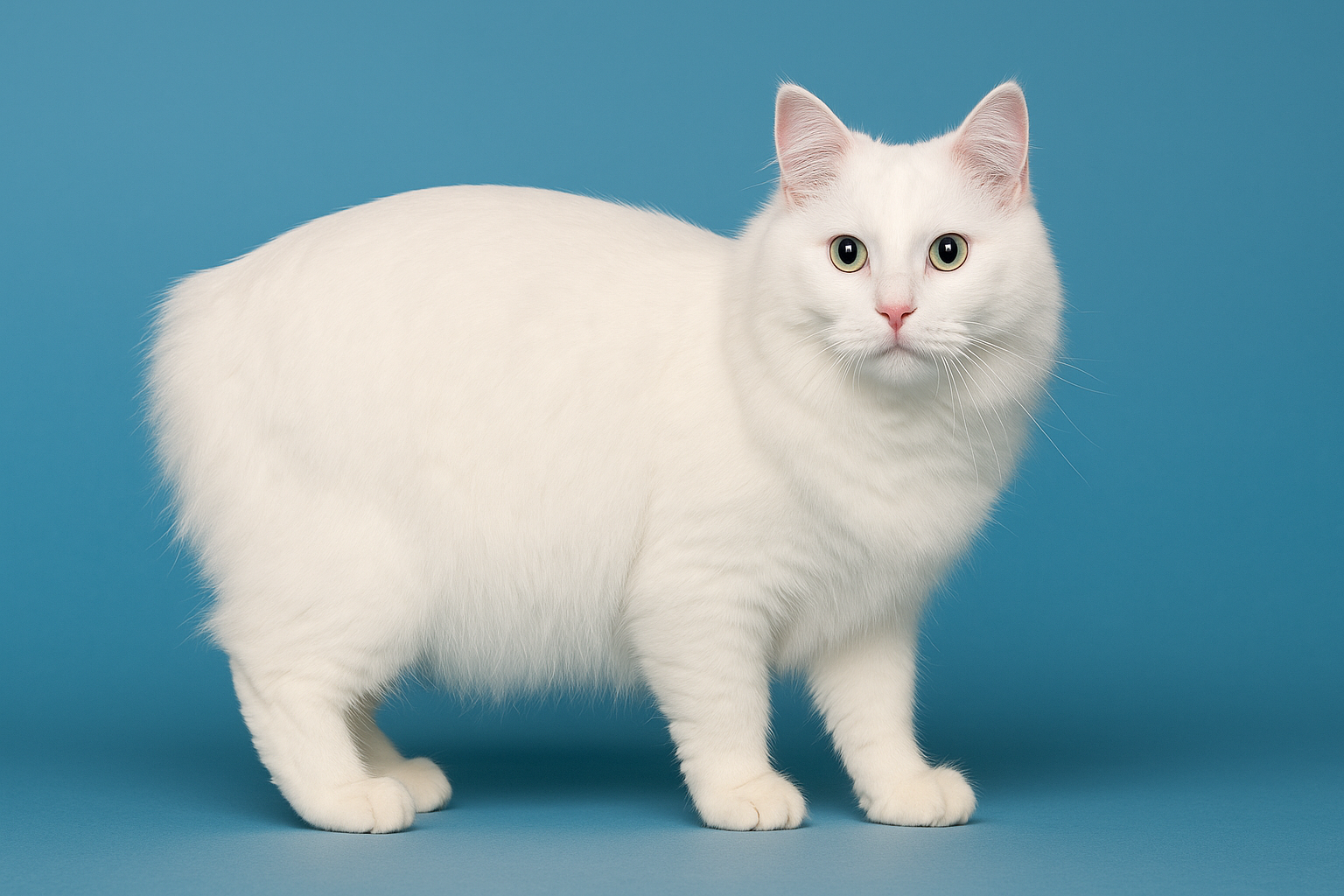
They’ve got a soft, dense double coat that really fluffs up in winter and sheds out in spring and fall. The earlier you start brushing routines, the better—most Cymrics grow to love the attention. Turn it into a quiet bonding moment and they’ll happily soak it up like a spa day.
Activity & Play
Cymrics aren’t wild balls of energy, but they definitely have their playful side. They’ll chase a toy mouse, zoom across the room, and then sprawl out like a furry loaf five minutes later. Short play sessions and interactive toys are perfect for keeping their brains and bodies active.
They love cozy corners, hideouts, and anything they can perch on. A sturdy cat tree or shelf gives them a comfy spot to climb, nap, or keep watch over their kingdom.
Health & Lifespan
Cymrics are generally healthy cats and can live 12 to 16 years—or even longer with good care. But because they carry the same tailless gene as the Manx, some are born with a condition called Manx Syndrome, which can affect the spine and nerves. It’s most common in completely tailless kittens (“rumpies”).
Good breeders know how to reduce the risk by avoiding certain pairings and screening for early signs. If you’re adopting from a breeder, ask about health testing and tail types in the litter. And like all cats, Cymrics do best with regular vet visits, quality food, and lots of affection.
Family Compatibility
Looking for a mellow, affectionate cat who fits right into family life? The Cymric is a natural. They’re gentle with kids, friendly with visitors, and usually get along just fine with other pets—especially polite dogs and laid-back cats.
They’re pretty adaptable and do well in all kinds of homes, from quiet apartments to bustling households. As long as they have a cozy spot to retreat to and a little love every day, they’re happy to settle in and make themselves part of the family.
Recommended Supplies
Cymric cats don’t need a ton of fancy gear, but a few thoughtful items can make a big difference. Because of their thick, plush coats, you’ll want to stay ahead of shedding with a good brush or grooming mitt. And since they’re low-to-the-ground loungers, soft beds and cozy hideouts are a big hit.
When it comes to the litter box, a clean setup matters. Long fur can trap odors fast, so it helps to scoop daily and use a litter disposal system that keeps things fresh between full cleanouts.
Cymric Cat FAQs
Are Cymric cats hypoallergenic?
No, Cymrics are not hypoallergenic. Their thick coat can hold dander and loose fur, which may trigger allergies in sensitive individuals.
Do all Cymrics have no tails?
Not all. Some are born with full tails, some with partial (“stumpy”) tails, and some with none at all (“rumpy”). The tailless look is the most iconic, but all tail types fall under the breed standard.
What is Manx Syndrome?
Manx Syndrome is a spinal defect caused by the gene that creates taillessness. It can lead to issues with the spine, nerves, and bowels. Ethical breeding helps reduce the risk.
Are Cymric cats good with other pets?
Yes! They’re typically gentle and sociable, making them great companions for other cats and even dogs, as long as introductions are done slowly.
Final Thoughts
Cymric cats might not have tails, but they more than make up for it with personality, loyalty, and charm. With their soft coats, round faces, and mellow vibe, they’re the ultimate cuddle buddies. Whether you live alone or have a bustling household, a Cymric is the kind of cat that makes any place feel more like home.

